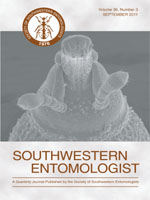Insects in the order Hemiptera are considered the second most important group of plant pathogen vectors, after aphids as agriculture crop pests. Genomic approaches are providing new information on the genetic basis of biology, behavior, and refinement of their phylogenetic classification. Three leafhopper species, important as vectors of plant pathogenic bacteria referred to as Xylella fastidiosa (Hemiptera: Cicadellidae), were examined by comparison of the available expressed sequence tags, ∼43,400 ESTs from three leafhopper species (Hunter datasets, NCBI). These species are vectors of the plant-pathogenic bacterium, Xylella fastidiosa (Wells et al.) the causal agent of Pierce's disease of grapevine. A tentative look at the gene expression across these three leafhopper species, the glassy-winged sharpshooter, Homalodisca vitripennis (Germar), blue-green sharpshooter, Graphocephala atropunctata (Signoret), and black-winged sharpshooter, Oncometopia nigricans (Walker), were analyzed. After comparison approximately 4,800 specific transcripts for each species were obtained, with most of these (∼40–48%) being identified as house-keeping. While the assembled datasets are not complete representations of all the leafhopper transcriptomes, these are predicted to be approximately one-fourth of the active genes in the genomes of these leafhoppers, based on comparative analysis of genomes of other insects in the order Hemiptera, based on an average of ∼15k-25,000 active genes. Interest in host plant utilization led us to focus on a poorly studied set of transcripts from leafhoppers the desaturases. Delta-9 desaturase enzymes have been shown to be highly conserved throughout Eukarya (fungi, protists, plants, and animals) and specifically function to place double bonds between the adjacent carbons of specific fatty acids, playing a vital role in the internal metabolism and physiology of insects. The Δ-9 desaturase sequences of several insect species, including the three leafhopper species of this study, were used to construct a phylogenetic tree. Additional analysis highlights differences for species-specific targeting of these genes within leafhoppers. It is proposed that as new developments in genomics and strategies like RNA-interference emerge, researchers will be able to design specific and effective management tools to reduce leafhopper abundance, and/or transmission of disease by leafhoppers.
How to translate text using browser tools
1 September 2011
Leafhopper Comparative Genomics - Identifying Similarities and Differences across Leafhopper Vectors of Xylella fastidiosa
E. W. Welch,
W. B. Hunter,
K. S. Shelby,
R. F. Mizell,
C. Tipping,
C. S. Katsar,
B. R. Bextine
ACCESS THE FULL ARTICLE

Southwestern Entomologist
Vol. 36 • No. 3
September 2011
Vol. 36 • No. 3
September 2011




